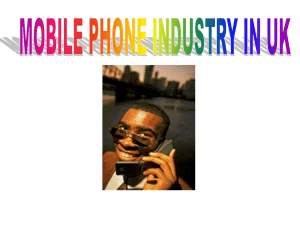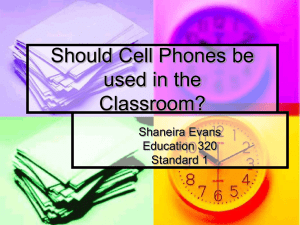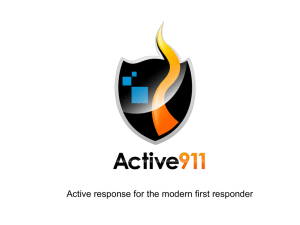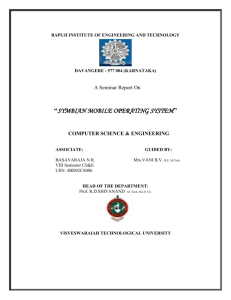Global Symbol Institute: Software On-Line And On-Demand
advertisement
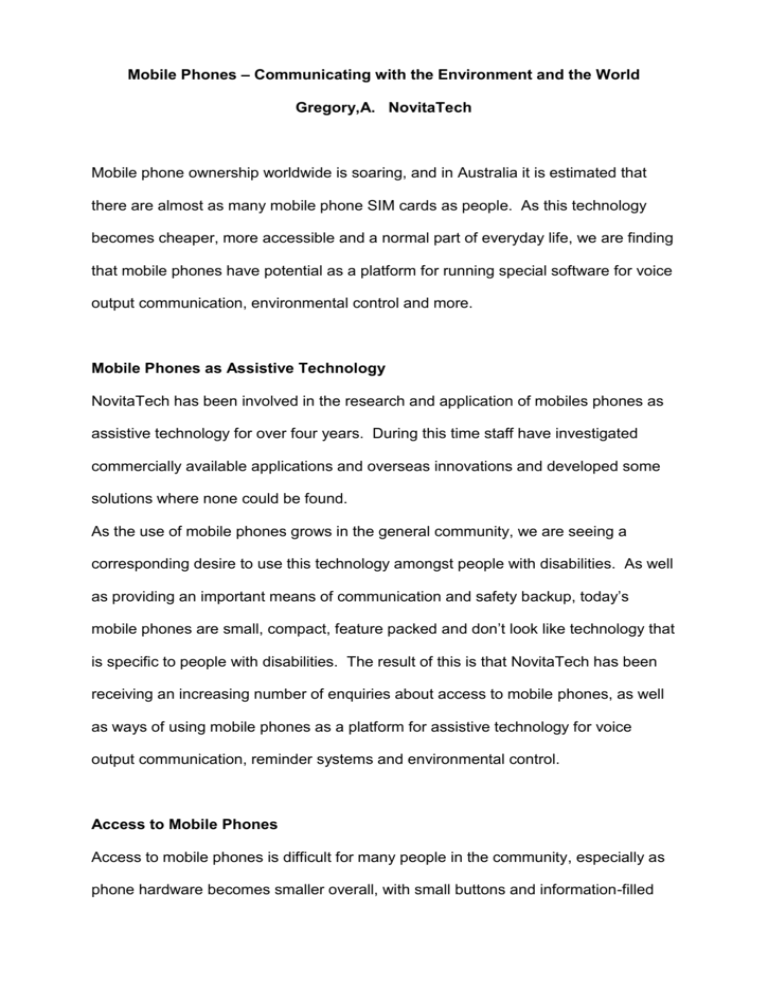
Mobile Phones – Communicating with the Environment and the World Gregory,A. NovitaTech Mobile phone ownership worldwide is soaring, and in Australia it is estimated that there are almost as many mobile phone SIM cards as people. As this technology becomes cheaper, more accessible and a normal part of everyday life, we are finding that mobile phones have potential as a platform for running special software for voice output communication, environmental control and more. Mobile Phones as Assistive Technology NovitaTech has been involved in the research and application of mobiles phones as assistive technology for over four years. During this time staff have investigated commercially available applications and overseas innovations and developed some solutions where none could be found. As the use of mobile phones grows in the general community, we are seeing a corresponding desire to use this technology amongst people with disabilities. As well as providing an important means of communication and safety backup, today’s mobile phones are small, compact, feature packed and don’t look like technology that is specific to people with disabilities. The result of this is that NovitaTech has been receiving an increasing number of enquiries about access to mobile phones, as well as ways of using mobile phones as a platform for assistive technology for voice output communication, reminder systems and environmental control. Access to Mobile Phones Access to mobile phones is difficult for many people in the community, especially as phone hardware becomes smaller overall, with small buttons and information-filled screens. Options available to people who have difficulty using standard mobile phone hardware due to physical limitations include: Careful selection of phone hardware, together with the use of commonly available but little known features like anykey answer, one touch dialling and voice dialling. This can offer a cost effective, readily available solution for some people. Addition of switch-adapted car kits which include a speaker and mike. This provides single switch answering and the ability to dial calls when used together with voice dialling. This can be a quick, easy and relatively low cost solution, however requires some set up to dial numbers and does not provide access to other phone features. Single switch scanning using of one of several European designed systems which include special software and hardware added to a mobile phone running either Symbian or Windows Mobile operating systems. These systems can provide access to telephone and other phone features, but can be slower and more cognitively demanding due to the need for scanning. Access from high end communication device – either by adding special software and hardware to access an external mobile phone, or by incorporating a PCMCIA phone card into the system. This solution offers users of a high end communication device with access to mobile phone features using their existing access methods and language generation system. Access from environmental control systems is becoming a more common feature. Several systems now provide mobile phone control using cable or Bluetooth connection to an external phone. This solution can provide an all-inone home control solution for people who don’t require voice output communication technology. Mobile Phones as a Platform for Assistive Technology A small but growing number of options exist for using mobile phone hardware as an platform for providing voice output communication, environmental control or as reminder systems. Environmental control – add special hardware and software to a Symbian mobile phone to control special Bluetooth receivers built into your environment. This can allow the user to open doors, turn on lights, control infrared appliances such as TV and DVD as well as make phone calls – all by using their mobile phone controlled by the existing phone buttons or a single switch. Voice output communication – we have met several people who have a speech impairment who use a written message on their mobile phone to assist when their speech cannot be understood. Adding voice output software can increase the usefulness of this option. To date, most of the software and hardware that we have experimented with has not been specifically designed for voice output communication, and has some limitations, however may be suitable for some users. Reminders – mobile phone are an ideal system to set up regular reminders for people who need extra assistance to complete daily tasks. Depending on the person’s needs, it maybe possible to use an existing phone or personal digital assistant (PDA), or it may be necessary to use a specific phone or PDA with special software that includes spoken and picture cues. Conclusion Mobile phone options are growing rapidly in the general community, and we are seeing an increasing number of options for people with disabilities to use this technology to meet their needs for communication with other people or to provide extra assistance in daily living.

